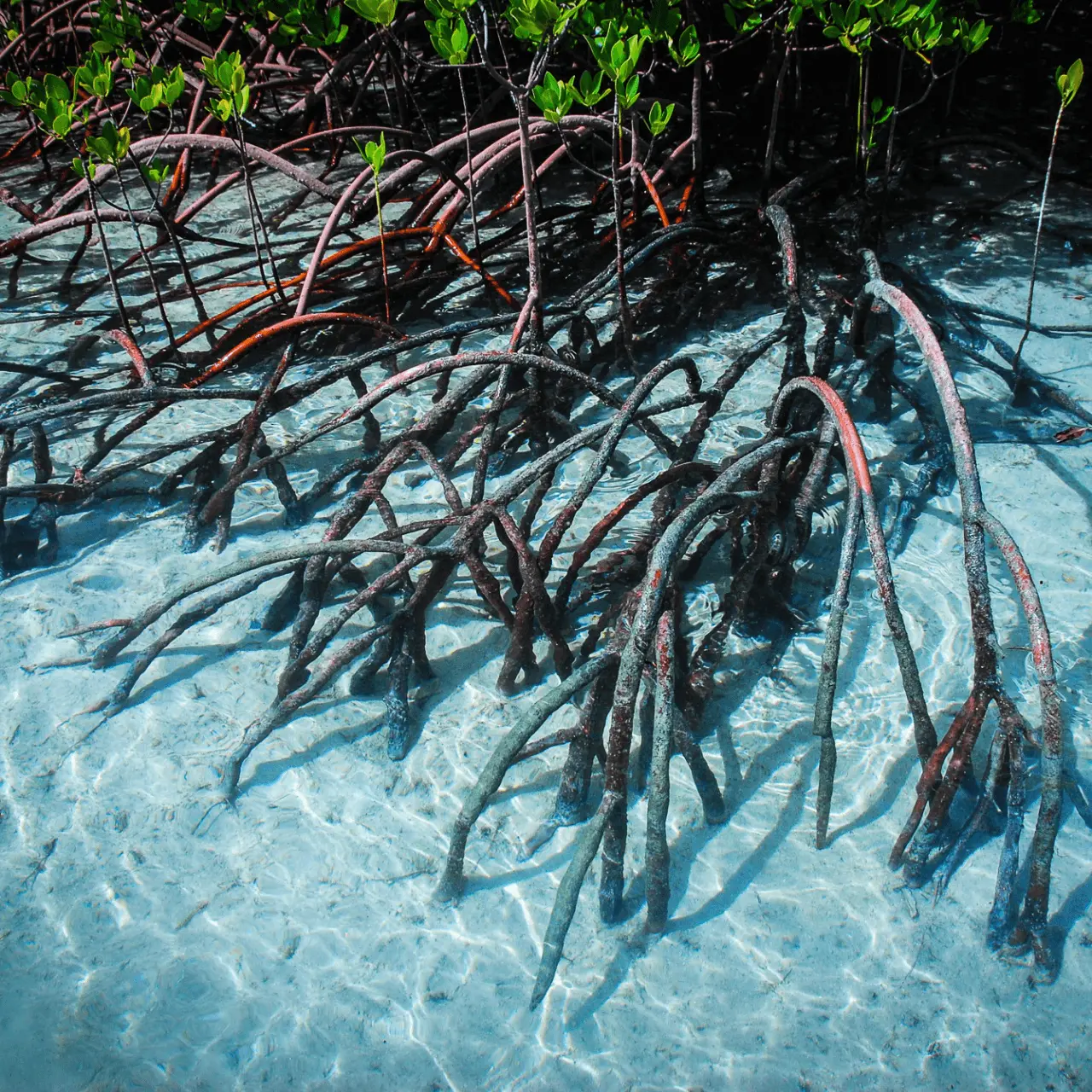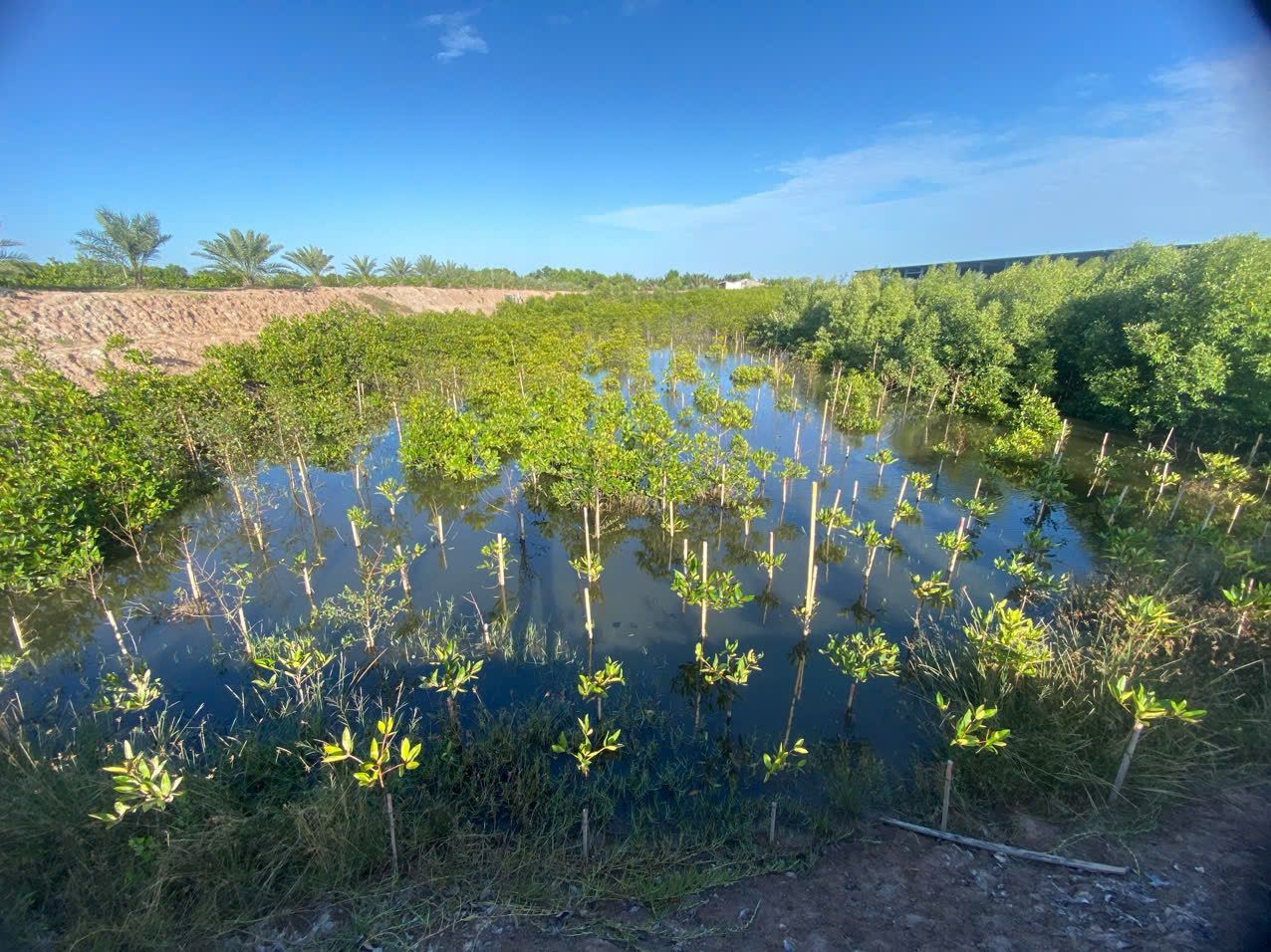Our mangrove-aquaculture system is an innovative approach that combines shrimp farming with ecosystem restoration. Mangroves create a natural filtration system,…
Mangrove
Ecosystem powerhouse alert: biodiversity hotspot that offers coastal protection and stores huge amounts of carbon.
Together towards an equator full of mangroves
We restore and create mangrove habitats using our ecological expertise in close collaboration with local communities. Our work addresses both the re-establishment of mangroves in degraded areas and the design of new habitat where conditions allow. This includes tackling the systemic drivers of mangrove loss—such as socio-economic pressures, hydrological changes, morphological shifts, and sediment system dynamics.
These insights inform tailored engineering and ecological interventions that are specific to each site and context. To ensure long-term impact, we work hand in hand with local stakeholders—including NGOs, government agencies, and communities—to co-develop initiatives that address root causes of degradation while strengthening local wellbeing and supporting sustainable livelihoods.
Through strategic partnerships and interdisciplinary approaches, we scale up mangrove restoration, and creation - pursuing our dream of an equator full of mangroves!

The value of mangrove ecosystems

Biodiversity
Mangroves are biodiversity hotspots. They provide nutrient-rich habitats for (juvenile) fish, birds, reptiles, monkeys and many other species. 80% of global fish catches are directly or indirectly dependent on mangroves, making them vital to our global food systems.

Coastal protection
Mangroves form a strong barrier between land and sea. The roots prevent erosion and break down wave energy, which reduces flood risk and loss of land. Mangroves limit the intrusion of salt water, protecting nearby agricultural lands from salinisation.

Carbon sink
Mangroves have a higher carbon density than terrestrial ecosystems, storing up to 4 times more carbon than mature forests. Most carbon is stored in the flooded soil. Acting as a large carbon sink - capturing GHG emissions - mangroves are essential in climate change mitigation strategies.
Global mangrove coverage

